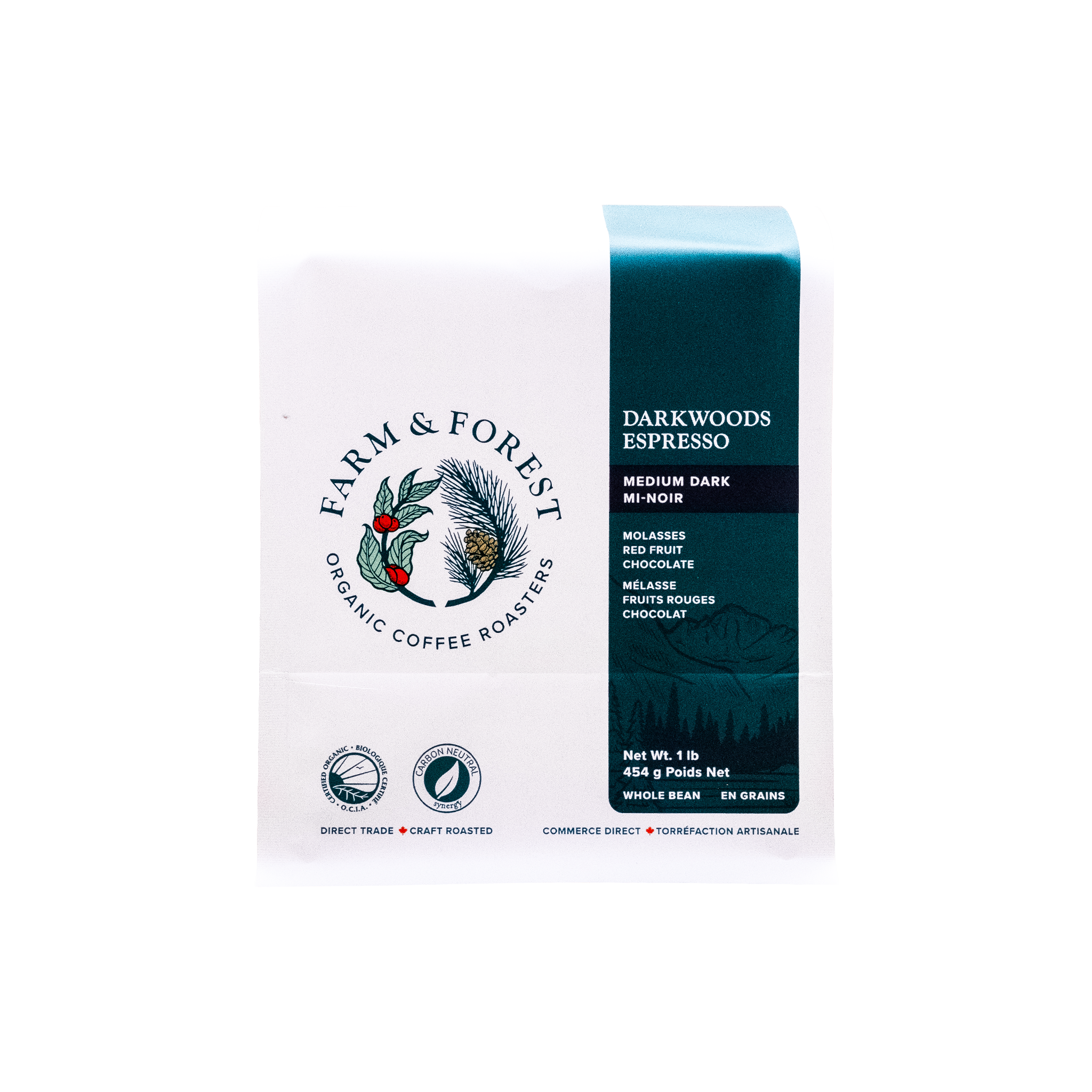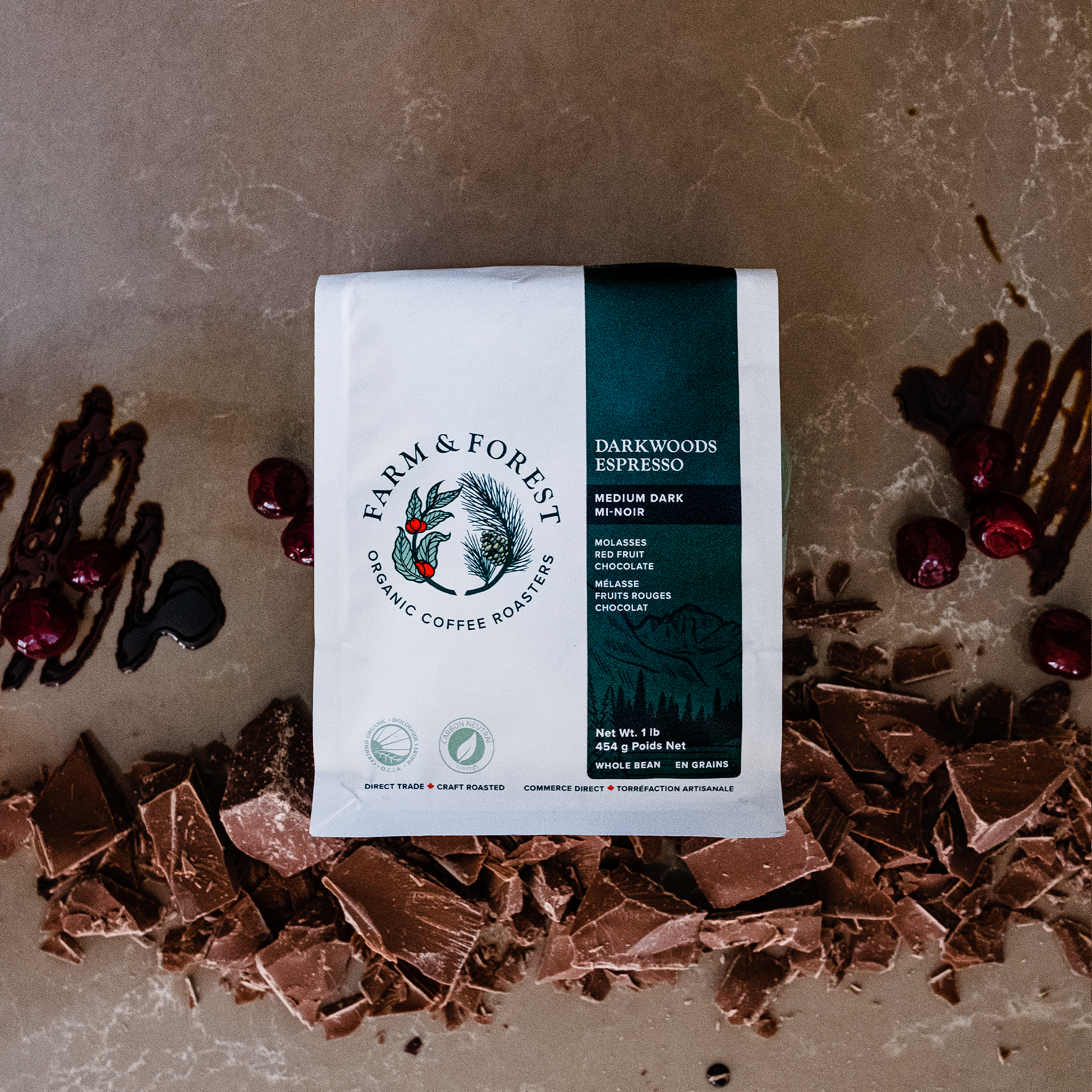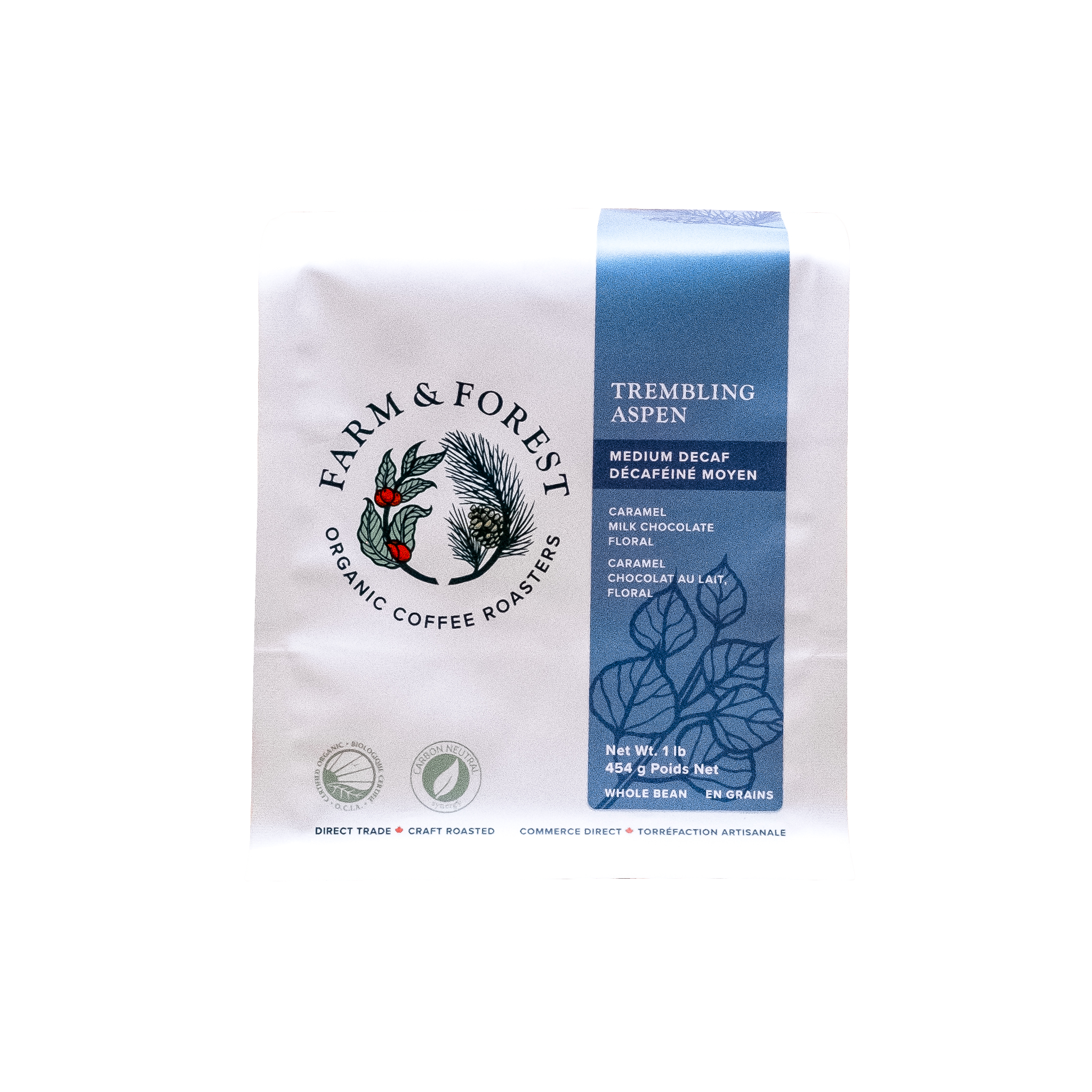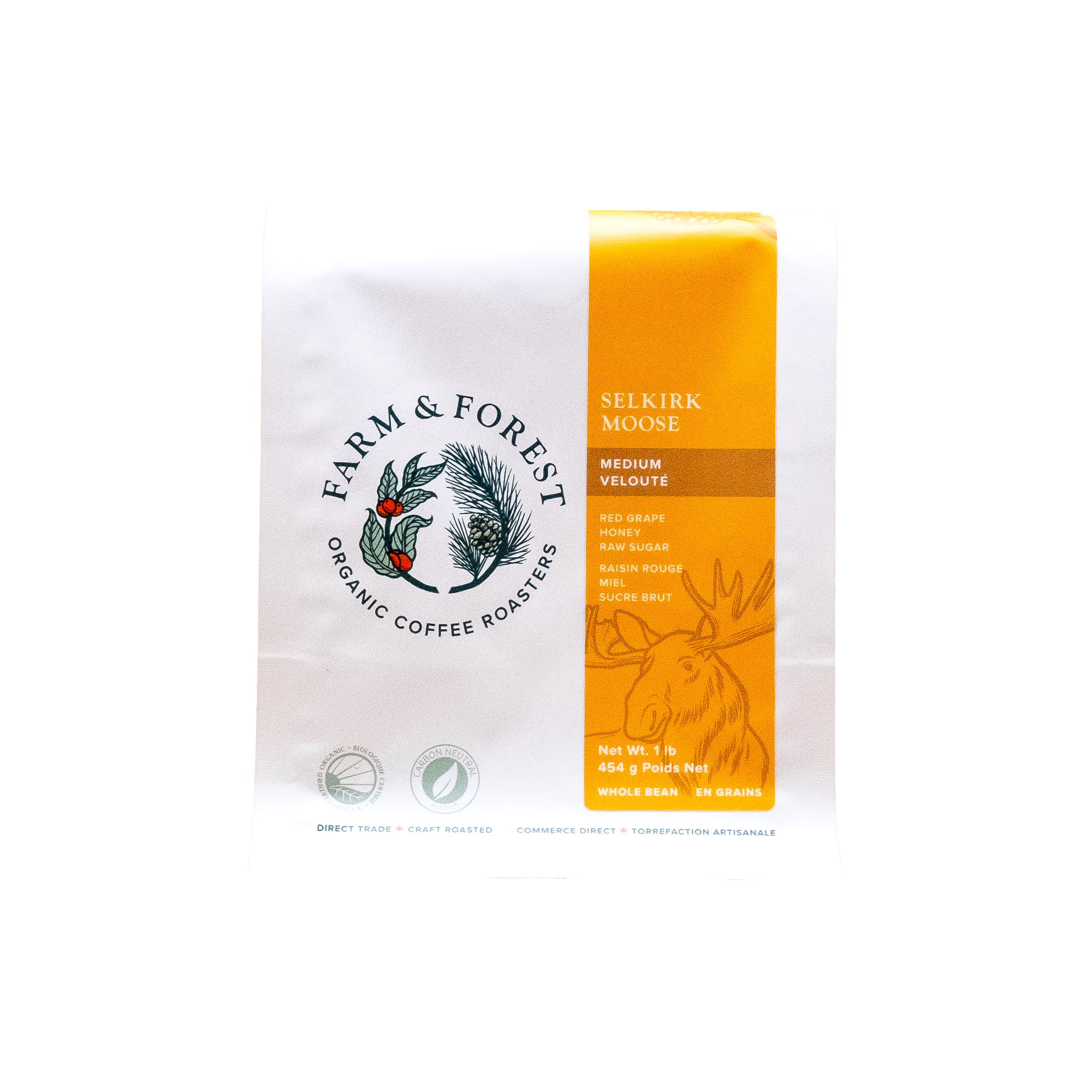Coffee acidity, all you need to know, and why it is a good thing
In the realm of coffee appreciation, acidity is often a misunderstood and overlooked aspect of the brew. However, acidity plays a crucial role in shaping the overall taste experience. So let’s explore together the diverse facets of coffee acidity, from its various types to the misconceptions surrounding it, and why it's actually a desirable trait.
In this article, we’ll cover
-
What is Coffee Acidity?
-
The different types of acidity found in coffee
-
Why Coffee Acidity is Beneficial
-
Common Misconceptions About Coffee Acidity
-
How To Balance Acidity in Coffee
-
The Perfect Medium Dark Roast With Acidity Notes To Start With
-
FAQs about Coffee acidity
What is Coffee Acidity?
Coffee acidity refers to a fundamental characteristic of coffee that contributes to its overall flavour profile. Contrary to what the term might suggest, acidity in coffee doesn't refer to the pH level, as in the case of citrus fruits or vinegar. Instead, it describes a range of sensory experiences that manifest as bright, tangy, or crisp notes on the palate. Acidity is primarily perceived through taste, although it can also affect the aroma and mouthfeel of the coffee.
The acidity in coffee is a result of organic acids present in the beans, which develop during the growth, processing, and roasting stages. These acids interact with other compounds in the coffee to create a complex flavour profile that includes fruity, floral, or wine-like characteristics. The level of acidity can vary significantly depending on factors such as the coffee bean's origin, varietal, altitude, soil composition, and processing method.
In essence, coffee acidity adds dimension and liveliness to the flavour profile, providing a pleasant contrast to other taste elements like sweetness and bitterness. It's a key component in creating a well-balanced and nuanced cup of coffee, contributing to its overall complexity and depth of flavour.
The different types of acidity found in coffee
The acidity found in coffee encompasses a diverse array of flavours, each contributing unique characteristics to the overall taste profile. Here are some of the most common types of acidity found in coffee:
-
Citric Acid: This is one of the primary acids found in coffee, imparting bright and vibrant flavours reminiscent of citrus fruits such as lemons or oranges. Coffees with higher levels of citric acid often exhibit a zesty, refreshing acidity that adds a lively dimension to the cup.
-
Malic Acid: Malic acid contributes tart and green apple-like flavours to the coffee. Coffees with noticeable malic acidity often exhibit crispness and brightness, with a slightly sour or tangy taste that adds complexity to the flavour profile.
-
Acetic Acid: Commonly associated with vinegar, can also be found in coffee, although in smaller quantities. It adds a subtle, wine-like acidity to the brew, contributing to its overall complexity and depth of flavour.
-
Phosphoric Acid: Phosphoric acid is less common in coffee but can occasionally be present, especially in coffees grown at higher altitudes. It adds a unique acidity that enhances sweetness and lends a smooth, well-rounded mouthfeel to the coffee.
-
Tartaric Acid: Is relatively rare in coffee but can sometimes be detected in certain varietals or processing methods. It contributes to a crisp, clean acidity reminiscent of grapes or wine, adding another layer of complexity to the flavour profile.
Why Coffee Acidity is Beneficial
Coffee lovers often debate the merits of acidity in their favourite brew, and far from being a drawback acidity is a fundamental component that enhances the overall quality and enjoyment of coffee. Here are some reasons why coffee acidity is beneficial:
-
Flavour Enhancement: Acidity adds brightness, vibrancy, and complexity to the flavour profile of coffee. Without acidity, coffee may taste dull or flat, lacking the lively character that acidity brings.
-
Balance: Acidity plays a crucial role in achieving balance in coffee. It acts as a counterpoint to sweetness and bitterness, ensuring that neither flavour overwhelms the palate. A balanced coffee with the right amount of acidity is more pleasant to drink, offering a harmonious blend of flavours that delights the senses.
-
Complexity: Acidity contributes to the complexity of coffee flavour by adding layers of depth and dimension. Different types of acidity, such as citric, malic, or tartaric, bring distinct nuances to the cup, ranging from fruity and floral to tangy and crisp. This complexity makes the coffee-tasting experience more engaging and rewarding for enthusiasts seeking depth in flavour.
-
Palate Cleansing: The acidity in coffee acts as a palate cleanser, refreshing the mouth between sips and preparing it for the next taste sensation. This cleansing effect helps to prevent palate fatigue and allows the drinker to fully appreciate the nuances of the coffee's flavour profile with each sip.
-
Versatility: Acidity makes coffee a versatile beverage that can be enjoyed in various forms and preparations. Whether brewed as a bright and acidic pour-over or as a smooth and balanced espresso, coffee acidity adapts to different brewing methods and preferences, appealing to a wide range of tastes.
Common Misconceptions About Coffee Acidity
By dispelling these common misconceptions about coffee acidity, you can develop a deeper appreciation for the diverse flavours and characteristics found in your favourite brews.
-
Acidity Equals Sourness: One of the most prevalent misconceptions about coffee acidity is that it equates to sourness. While acidity can indeed manifest as a tangy or bright flavour, especially in lighter roast coffees, it's essential to understand that acidity in coffee refers to a complex range of flavours that contribute to its overall taste profile. When properly balanced, acidity adds vibrancy and depth to coffee without making it sour.
-
Low-Acid Coffees Are Always Better: Another misconception is that low-acid coffees are universally preferable or of higher quality. While some individuals may prefer coffees with lower acidity due to personal taste preferences or digestive sensitivities, it's important to recognize that acidity is not inherently negative. In fact, acidity is a desirable trait in many specialty coffees, contributing to their complexity and flavour profile.
-
Acidity Is Undesirable in Dark Roasts: It's commonly believed that dark roast coffees lack acidity altogether or that acidity is undesirable in darker roasts. While it's true that dark roast coffees typically have less perceptible acidity compared to lighter roasts, acidity can still be present and contribute to the overall flavor profile. When carefully managed, acidity can enhance the complexity and balance of dark roast coffees without dominating their rich, caramelized flavors.
How To Balance Acidity in Coffee
Balancing acidity in coffee is crucial for creating a harmonious and enjoyable flavor profile. Adjusting variables such as bean selection, roast level, brewing parameters, water quality, blending, and temperature allows you to tailor your coffee to suit your individual taste preferences.
Selecting the Right Beans:
Start by choosing coffee beans with acidity levels that complement your taste preferences and brewing method. Some regions and varietals naturally produce coffees with higher acidity, while others are known for their milder profiles. Experiment with different origins and processing methods to find beans that strike the right balance for you.
Adjusting the Roast Level:
The roast level significantly impacts the acidity of coffee. Lighter roasts tend to preserve more of the bean's natural acidity, while darker roasts develop deeper, caramelized flavors with reduced acidity. Depending on your preference, you can choose a roast level that either highlights or mitigates acidity. Medium roasts often strike a balance, offering moderate acidity alongside rich flavor.
Optimizing Brewing Parameters:
Fine-tuning your brewing parameters, such as grind size, water temperature, and brew time, can help control acidity levels in your coffee. For example, a finer grind and shorter brew time can extract more acidity, while a coarser grind and longer brew time can mellow it out. Experiment with different brewing techniques to find the optimal balance of acidity for your taste.
Water Quality:
The quality of water used for brewing can also affect acidity levels in coffee. Hard water with high mineral content can enhance acidity, while soft water may produce a smoother, less acidic cup. Using filtered water with balanced mineral content can help achieve consistent results and bring out the best flavors in your coffee.
Want to lean more? We prepared a full article covering how water quality can impact your coffee.
Blending Coffees:
Blending different coffees with complementary flavor profiles is another effective way to balance acidity. By combining beans with varying levels of acidity, sweetness, and body, you can create a well-rounded blend that offers complexity and depth of flavor. Experiment with different blending ratios until you find the perfect balance.
Adjusting Water Ratios:
Modifying the ratio of coffee to water in your brew can also influence acidity levels. Increasing the coffee-to-water ratio can intensify acidity, while decreasing it can soften it. Play around with different ratios until you achieve the desired balance of flavors.
Want to learn more? We prepared a full article about coffee-to-water ratio, and how much water to use for each coffee brewing method.
Temperature Control:
Controlling the temperature of the water used for brewing is essential for managing acidity. Higher water temperatures tend to extract more acidity from the coffee grounds, while lower temperatures can result in a smoother, less acidic brew. Experiment with different temperature settings to find the optimal balance for your preferred flavor profile.
The Perfect Medium Dark Roast With Acidity Notes To Start With
Now that you know more about acidity, and that it can be the high note of your next perfect cup of coffee, you are probably wondering where to start, and here is our suggestion:
Farm & Forest Western Red Cedar Coffee
This coffee has an immensely versatile flavour profile that reminds us of plum, brown sugar, and milk chocolate. The gentle, fruity acidity and light sweetness adds just enough sparkle to the creamy cocoa undertones, culminating in a cup that’s delicious on its own or with milk.
This medium roast combines coffee beans from Guatemala, Sumatra, Peru, and Ethiopia, that were carefully roasted in our carbon-neutral facility in British Columbia!
And as a bonus for every lb of coffee sold we donate 15¢ to the Nature Conservancy of Canada to protect habitat for our nation’s wildlife.
FAQs about Coffee acidity
Does acidity in coffee mean it will taste sour?
Not necessarily. While acidity can contribute to tangy or bright flavors, it's important to distinguish between acidity and sourness. Acidity in coffee adds vibrancy and complexity to the flavor profile, enhancing the overall taste experience when properly balanced.
Are low-acid coffees better for people with sensitive stomachs?
While some individuals with sensitive stomachs may find low-acid coffees more tolerable, acidity alone is not always the culprit. Factors such as bean quality, roast level, and brewing method can also affect stomach sensitivity. It's best to experiment with different coffees and preparation techniques to find what works best for you.
Can acidity levels vary depending on the coffee's origin?
Yes, acidity levels can vary significantly depending on the coffee bean's origin, altitude, soil composition, and climate. For example, coffees from high-altitude regions often exhibit higher acidity levels due to slower bean maturation and increased sugar development.
How can I balance acidity in my coffee if it's too pronounced?
There are several ways to balance acidity in coffee. You can try opting for a darker roast, adjusting your brewing parameters (such as grind size and brew time), selecting beans with lower acidity, or experimenting with different brewing methods. Blending different coffees with complementary flavor profiles can also help achieve a balanced cup.
Are darker roast coffees completely devoid of acidity?
While darker roast coffees typically have less perceptible acidity compared to lighter roasts, they can still retain some level of acidity. However, the acidity in darker roasts tends to be more subdued and integrated with other flavor components, such as richness and bitterness. Acidity can still contribute to the overall complexity and balance of a well-roasted coffee, even in darker roasts.














